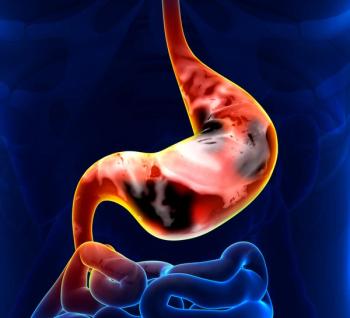
Oncology NEWS International
- Oncology NEWS International Vol 16 No 6
- Volume 16
- Issue 6
Gastric Ca Registry IDs Those With CDH1 Mutation
A registry for patients with gastric cancer who have early-onset or familial disease and their relatives may eventually lead to strategies for early detection and prevention of this cancer
LAS VEGASA registry for patients with gastric cancer who have early-onset or familial disease and their relatives may eventually lead to strategies for early detection and prevention of this cancer, according to one institution's experience. Gastric cancer disproportionately affects poor and minority populations, and this pattern cannot be fully explained by environmental factors, Jennifer Randazzo, RN, BSN, reported at the 2007 Annual Congress of the Oncology Nursing Society (abstract 2170). Moreover, 30% of families with hereditary diffuse gastric cancer have a mutation in the CDH1 gene that downregulates expression of e-cadherin, reducing cell-cell adhesion and thereby promoting invasion.
To better study the genetic contributors to gastric cancer, Ms. Randazzo and her colleagues at Memorial Sloan-Kettering Cancer Center established the "Early-Onset and Familial Gastric Cancer Registry," Ms. Randazzo told ONI in an interview.
Patients with gastric cancer are eligible if they have early-onset disease (onset before age 50 years), a family history of the disease (at least one affected first-degree relative or two affected second-degree relatives), or a known CDH1 mutation in their family. Relatives without gastric cancer are eligible if they have at least one first-degree relative with early-onset disease, at least two relatives with gastric cancer (one of whom must be a first-degree relative), or at least three second-degree relatives with gastric cancer.
Questionnaires
Participants complete family history and gastric cancer risk factor questionnaires, and are invited to contribute samples for a blood and tissue repository, Ms. Randazzo said. They are then offered genetic counseling to discuss the risks, benefits, and limitations of genetic testing; relatives are also offered an evaluation for the need for a screening upper endoscopy exam.
Since January 2006, the registry has enrolled 118 participants: 47 are patients with early-onset gastric cancer, 26 are patients with familial gastric cancer, 30 are relatives, and 15 are individuals at low risk included as a control group. "So far, 70 patients or families worldwide have indeed had the CDH1 mutation. Prophylactic gastrectomies have shown that they do also have cancer in situ," Ms. Randazzo said. "So it looks like we are headed in the right direction."
Although the registry is currently open only at Memorial Sloan-Kettering Cancer Center, individuals from across the United States can nonetheless participate, she said.
Articles in this issue
over 18 years ago
ACS Launches Major Epidemiology Studyover 18 years ago
Pt Selection Key to Radioembolization of Liver Ca'sover 18 years ago
Million Dollar Gotham Prize Announcedover 18 years ago
Diagnostic Dilemma: GI Diseaseover 18 years ago
Junovan Fails to Win ODAC Nod for Osteosarcoma Treatmentover 18 years ago
Surveillance Colonoscopy Guidelines Not Being Followedover 18 years ago
Removing Stage IV Primary May Cut Mortalityover 18 years ago
Nuclear Export Inhibitors Testing Moving Forwardover 18 years ago
ODAC: orBec Yields No 'Substantial Efficacy' in GI GVHDNewsletter
Stay up to date on recent advances in the multidisciplinary approach to cancer.
















































































